Disclosure: This article contains affiliate links. We may earn a commission from purchases at no extra cost to you, which helps our travel content.
I've explored countless coastal towns across Europe, but there's something uniquely captivating about Pärnu that keeps drawing me back. This charming Estonian beach town—often overshadowed by Tallinn's medieval allure—offers that rare combination of authentic cultural experiences and laid-back seaside vibes that's increasingly hard to find along Europe's popular coastlines. My first visit three summers ago was meant to be a quick two-day stopover during a Baltic design research trip. Seven days later, I was still there, completely enchanted by the town's wooden architecture, expansive beaches, and the way Estonian design sensibilities manifest in everything from café interiors to public spaces. For families seeking an affordable European beach destination without the crowds of the Mediterranean, Pärnu delivers that perfect balance of relaxation, cultural immersion, and simple pleasures that create the most meaningful travel memories.
Why Pärnu Should Be on Your Family Travel Radar
Estonia rarely tops family vacation lists, but that's precisely what makes Pärnu such a delightful discovery. Located just 90 minutes south of Tallinn, this seaside resort town has been Estonia's summer capital for over a century, though international tourists have only recently begun to take notice.
What immediately struck me about Pärnu was its human scale—everything feels accessible and manageable, especially when traveling with children. The main beach area stretches for kilometers, with shallow, calm waters perfect for young swimmers. Unlike the pebbly shores found elsewhere in Northern Europe, Pärnu boasts fine, soft sand that rivals Caribbean beaches (though admittedly, the Baltic Sea temperatures require a bit more courage for swimming).
The town's architecture tells a fascinating story of resilience and reinvention. Walking through the historic center, you'll notice the harmonious blend of wooden villas from the early 20th century alongside Soviet-era buildings and contemporary Estonian design. As an interior designer, I was particularly drawn to the wooden beach houses with their intricate trim details and pastel colors—these vernacular structures speak volumes about Estonia's relationship with its forests and maritime heritage.
What makes Pärnu especially family-friendly is its walkability and the thoughtful urban planning evident throughout the town. Wide sidewalks, abundant green spaces, and clearly marked cycling paths make navigating with children a breeze. I recommend renting bicycles from city bikes for the duration of your stay—they're the perfect way to explore the coastline and venture into the charming residential neighborhoods beyond the tourist center.
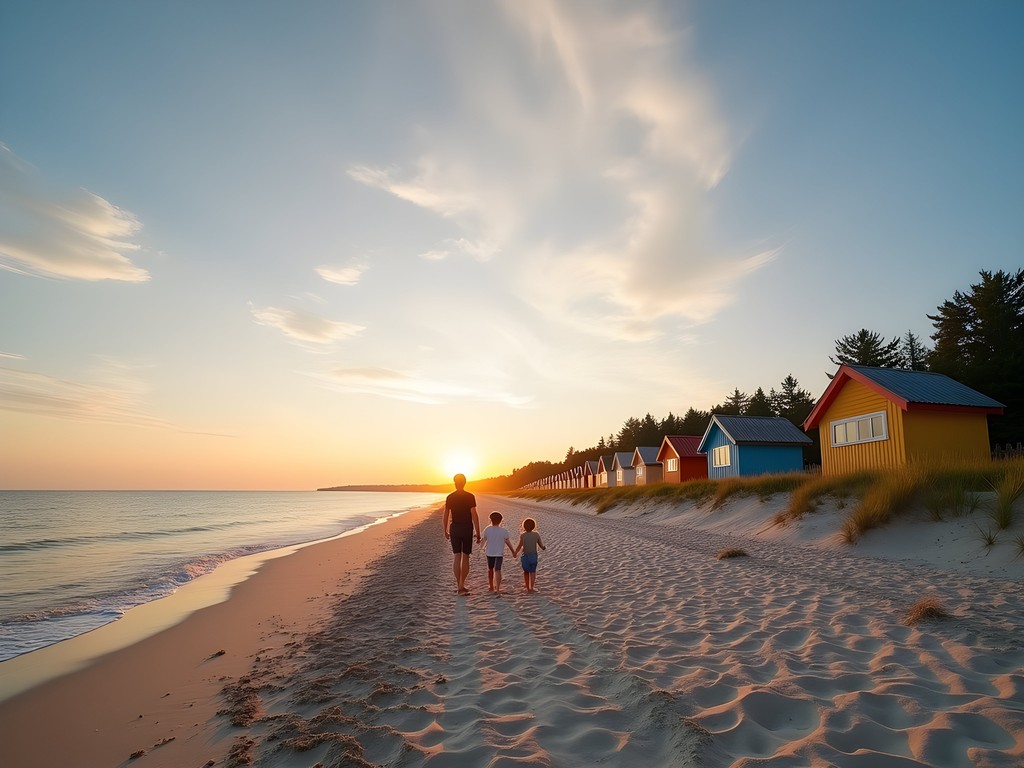
💡 Pro Tips
- Visit the Tourist Information Center on your first day for a free city map and current event listings
- The beach is most peaceful before 10am and after 6pm
- Many restaurants offer 'päevapakkumine' (daily specials) at lunchtime for significant savings
Pärnu's Beach Scene: Beyond the Sand
While Pärnu Beach is undoubtedly the town's crown jewel, there's much more to the experience than simply lounging on the sand. The entire beachfront area has been thoughtfully designed as a public space that serves multiple functions throughout the day.
The wide promenade running parallel to the shore is a masterclass in public space design. Dotted with playgrounds, outdoor exercise equipment, and art installations, it provides entertainment for all ages. My morning ritual quickly became an early walk along this promenade, watching local families arrive with their elaborate beach setups while artists captured the morning light on canvas.
What particularly impressed me was how the beach infrastructure accommodates visitors with varying needs. Wooden boardwalks extend across the sand at regular intervals, making the shoreline accessible for strollers and wheelchairs. The main beach area features a dedicated family section with shallow, roped-off swimming areas and lifeguards on duty throughout the summer season.
For active families, beach volleyball courts are free to use (just bring your own ball), and equipment rentals for everything from paddleboards to beach toys are available at reasonable prices. I spent one memorable afternoon learning the basics of paddleboarding from a patient Estonian instructor who spoke perfect English—a common find throughout Pärnu, where tourism has created excellent language skills among locals without diminishing the authentic Estonian experience.
When packing for your beach days, I recommend bringing a beach shelter. The Baltic weather can be changeable, and having a shaded retreat from both unexpected rain showers and intense sunshine will extend your comfortable beach time considerably. Estonian parents come well-prepared with similar setups, creating little personalized beach compounds that serve as home base for the day's adventures.
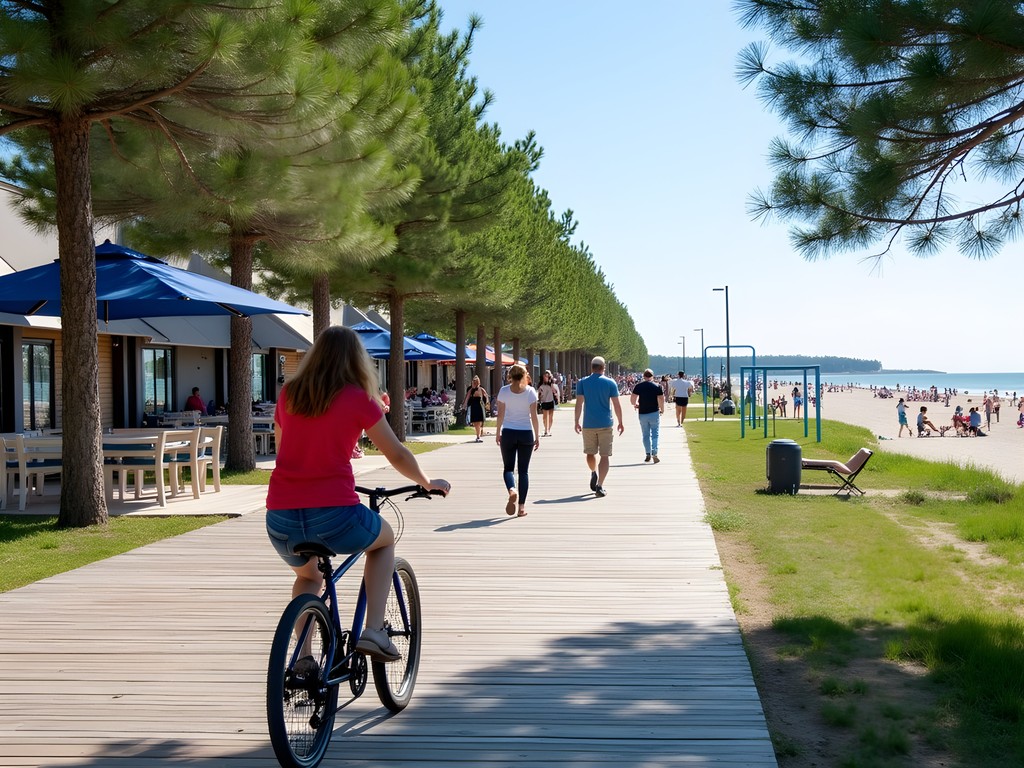
💡 Pro Tips
- The water is typically warmest in late July and early August
- Beach chairs and umbrellas are available for rent, but bringing your own saves money
- The beachfront cafés are lovely but pricey—consider packing a picnic
Wooden Architecture and Design Heritage
As someone who's built a career around documenting vernacular architecture, Pärnu offered me an unexpected treasure trove of design inspiration. The town's wooden architecture represents one of the best-preserved collections of early 20th century Baltic resort buildings in Europe.
The neighborhood of Rannarajooni, nestled between the beach and the town center, features rows of wooden summer villas that tell the story of Estonia's pre-Soviet prosperity and its connection to Scandinavian design traditions. These buildings, many now lovingly restored as guesthouses or private homes, showcase distinctive features like ornate verandas, decorative woodwork, and a color palette drawn from traditional Estonian folk art.
During my extended stay, I connected with local architect Maris (many Estonians use only their first names professionally), who explained how these structures were built to maximize natural light during Estonia's brief but intense summer season. The large windows, strategically placed to capture sunlight from multiple angles, create interiors that feel spacious and airy despite their modest footprints.
For those interested in Estonian design heritage, I recommend taking a self-guided walking tour of the villa district. The tourist office provides excellent maps highlighting architectural points of interest, complete with historical context. Photograph enthusiasts will want to bring a compact camera with good low-light capabilities for capturing the intricate details of these buildings, particularly during the magical Nordic evening light that seems to last forever during summer months.
What makes these wooden structures particularly remarkable is that they survived both Soviet occupation and modernization efforts. Many Estonian towns lost significant portions of their wooden architecture heritage, but Pärnu's status as a resort destination paradoxically helped preserve these buildings, as they were repurposed as holiday accommodations for Soviet officials and workers.
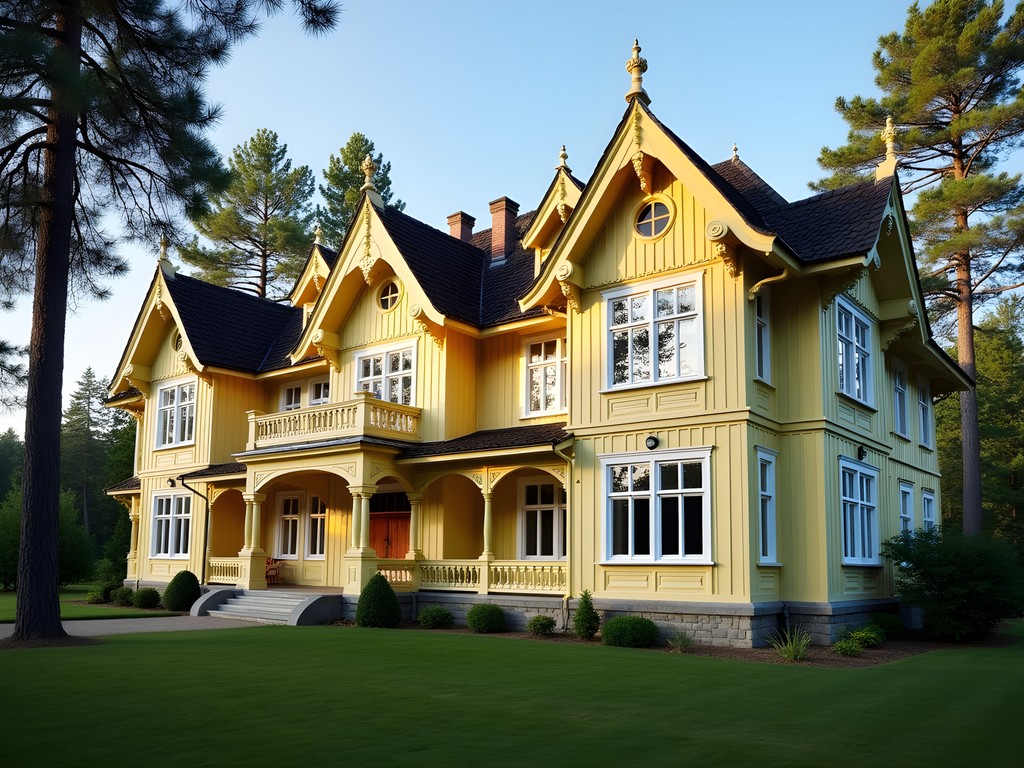
💡 Pro Tips
- The Villa Ammende offers guided tours of its Art Nouveau interiors on Wednesdays (book in advance)
- Look for the blue informational plaques on historic buildings that provide architectural context in Estonian and English
- Early morning and evening light creates the best conditions for photographing the wooden architecture
Family-Friendly Dining and Local Cuisine
Estonian cuisine might not have the international recognition of its Mediterranean counterparts, but Pärnu's food scene offers delicious insights into Baltic culinary traditions—and surprising child-friendly options that won't break your budget.
My first revelation came at Tervise Paradiis, a casual eatery where I watched Estonian families sharing enormous platters of smoked fish, black bread, and fresh vegetables. When I asked the grandmother at the next table about her family's meal, she smiled and said, "In Estonia, we don't have special food for children—just smaller portions of good food." This philosophy runs throughout Pärnu's dining establishments, where children are welcomed with simplified versions of adult dishes rather than segregated to generic "kids' menus."
For budget-conscious families, the central market (Keskväljak) offers an authentic glimpse into Estonian food culture. Local farmers sell seasonal berries, mushrooms, and vegetables at prices that make grocery stores seem extravagant. I became slightly addicted to the smokehouse stall where just a few euros bought enough freshly smoked fish to make several meals.
Café culture thrives in Pärnu, with outdoor seating spilling onto sidewalks during summer months. Supelsaksad Café became my regular breakfast spot, not just for their excellent kohvi (coffee) and homemade pastries, but for the thoughtful design touches throughout the space—vintage Estonian furniture restored with contemporary fabrics, lighting fixtures crafted from repurposed fishing equipment, and serving pieces made by local ceramicists.
For a special meal that won't devastate your budget, Raimond Restaurant inside the Hedon Spa offers a children's tasting menu that introduces young palates to Estonian flavors through familiar formats. My friend's seven-year-old daughter still talks about the "forest plate" of mushroom pasta with edible flowers that made her feel "like a fancy grown-up" while actually enjoying nutritious local ingredients.
Don't leave Pärnu without trying kama, a traditional Estonian flour mixture made from roasted grains that's typically mixed with yogurt or kefir for a satisfying breakfast or dessert. I now keep a package of kama flour in my pantry at home—it's become my favorite souvenir that transports me back to lazy Pärnu mornings with each spoonful.
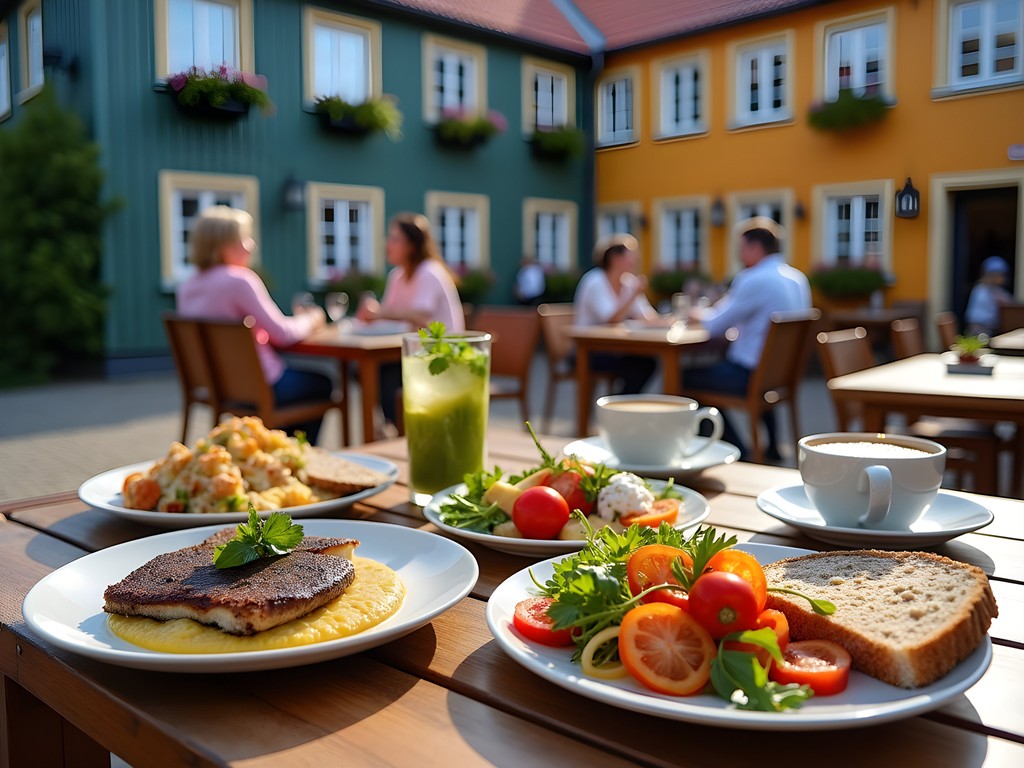
💡 Pro Tips
- Many restaurants offer half portions of regular menu items for children at reduced prices—just ask
- The daily lunch specials (päevapakkumine) typically run from 12-3pm and offer the best value
- Grocery stores like Rimi and Selver have excellent prepared food sections for picnic supplies
Rainy Day Activities and Cultural Experiences
While Pärnu's beaches are its main summer attraction, Estonian weather has a reputation for unpredictability. Fortunately, the town offers plenty of engaging indoor activities that provide cultural insights while keeping children entertained.
The Pärnu Museum surprised me with its interactive approach to local history. Rather than the dusty displays I expected, I found thoughtfully designed exhibits that invite visitors to touch, explore, and engage. The section on traditional Estonian wooden toy making particularly captivated me—watching a local craftsman demonstrate techniques passed down through generations reminded me why preserving these cultural practices matters so deeply.
For families, the Pärnu Central Library deserves special mention. This isn't just a place to borrow books; it's a community hub with regular English-language storytime sessions, craft workshops, and a dedicated children's area designed with imagination-sparking reading nooks. During one sudden downpour, I witnessed local parents casually gathering here, forming an impromptu playgroup while rain lashed against the windows.
The Maarja-Magdaleena Guild represents Estonian craft traditions at their finest. This working guild house features artisans practicing traditional handicrafts including weaving, pottery, and woodworking. What makes this experience special is the hands-on workshops offered throughout summer—my attempt at Estonian pattern weaving produced a rather lopsided pot holder that nonetheless remains one of my most treasured souvenirs.
For a uniquely Estonian experience that combines design appreciation with relaxation, the historic Pärnu Mud Baths deserve a visit. While the full spa treatments might not appeal to younger children, the building itself is an architectural landmark worth exploring. The distinctive Art Nouveau structure has been thoughtfully restored, with many original details preserved and educational displays explaining the history of Estonia's wellness traditions.
I recommend bringing a travel journal for both adults and children to document these indoor discoveries. My own sketch-filled journal from Pärnu has provided design inspiration for client projects years later, particularly the traditional color combinations and patterns I documented throughout the town's museums and craft centers.
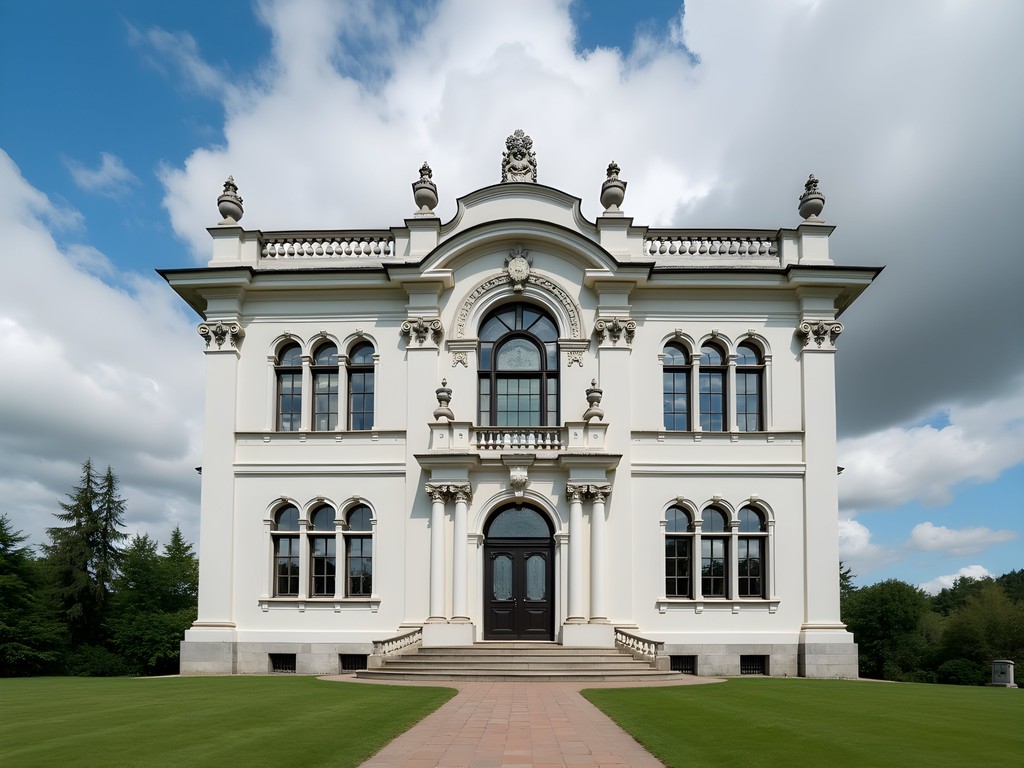
💡 Pro Tips
- The Pärnu Museum offers family tickets that cover two adults and up to three children for €15
- Check with your accommodation about rainy day discounts—many attractions offer special rates during inclement weather
- The tourist office provides a free 'Rainy Day in Pärnu' guide with age-appropriate activity suggestions
Day Trips and Nature Excursions
While Pärnu itself offers plenty to fill a week's itinerary, some of my most memorable experiences came from venturing beyond the town limits into Estonia's remarkably accessible wilderness areas.
Soomaa National Park, just 40 minutes from Pärnu, introduced me to Estonia's distinctive bog landscapes—ecosystems that feel otherworldly with their floating paths and carnivorous plants. Local guide Aivar explained how these wetlands have shaped Estonian culture, from folk tales to traditional building techniques adapted for soft ground. The park offers family-friendly bog walking tours where children can safely experience walking on what feels like natural trampolines as the ground gently gives beneath their feet.
For a cultural contrast, the island of Kihnu provides a glimpse into one of Europe's last matriarchal societies. A one-hour ferry ride from Pärnu delivers you to this UNESCO-recognized community where women have traditionally held cultural authority while men spent long periods at sea. The island's distinctive striped skirts, still worn daily by many women, represent a living textile tradition that has adapted over centuries while maintaining its cultural significance.
Closer to town, the coastal village of Valgeranna offers a more secluded beach experience with the added attraction of the Adventure Park—a series of treetop obstacle courses designed for different age groups and ability levels. Estonian families flock here on weekends, creating a lively atmosphere where children challenge themselves physically while parents enjoy coffee at the base camp café.
For these excursions, I recommend bringing a waterproof backpack that can protect cameras and extra clothing during unexpected weather changes. Estonian outdoor enthusiasts have a saying that translates roughly to "There is no bad weather, only inappropriate clothing"—a philosophy that serves travelers well in this region of rapid weather shifts.
What struck me throughout these natural areas was Estonia's thoughtful approach to outdoor infrastructure. Boardwalks through sensitive environments, clear multilingual signage, and well-maintained facilities reflect a deep cultural respect for nature access as a public right balanced with conservation priorities. For families accustomed to more developed or commercialized natural attractions, the simplicity and authenticity of these experiences often becomes the highlight of their Estonian journey.

💡 Pro Tips
- Book bog walking tours at least one day in advance through the Soomaa visitor center
- The Kihnu ferry requires advance reservations during peak summer season
- Many natural areas have limited mobile phone coverage—download offline maps before departing
Final Thoughts
As I packed my bags after that unexpectedly extended first visit to Pärnu, I realized I'd discovered something increasingly rare in today's travel landscape—an authentic destination that welcomes visitors without being fundamentally changed by tourism. The families I met on Pärnu's beaches weren't there to pose for Instagram; they were simply enjoying their summer traditions as Estonians have for generations. This authenticity, combined with the town's accessibility, safety, and surprising affordability, makes Pärnu an ideal introduction to Baltic culture for families seeking something beyond Europe's well-trodden paths. Whether you're sketching wooden architecture details, learning traditional crafts during a sudden rainfall, or simply building sandcastles alongside Estonian families, Pärnu offers the kind of genuine cultural immersion that transforms tourists into travelers. As we collectively seek more meaningful ways to explore our world, this understated Baltic beach town reminds us that sometimes the most profound travel experiences come wrapped in the simplest packages.
✨ Key Takeaways
- Pärnu combines affordable beach relaxation with authentic cultural experiences
- The town's wooden architecture and design heritage offers unique insights into Estonian identity
- Family-friendly infrastructure makes navigation and activities stress-free
- Nearby natural areas provide easy access to Estonia's distinctive ecosystems
📋 Practical Information
Best Time to Visit
June through August, with July offering warmest temperatures
Budget Estimate
€50-100 per day for a family of four including accommodations, food and activities
Recommended Duration
5-7 days
Difficulty Level
Easy
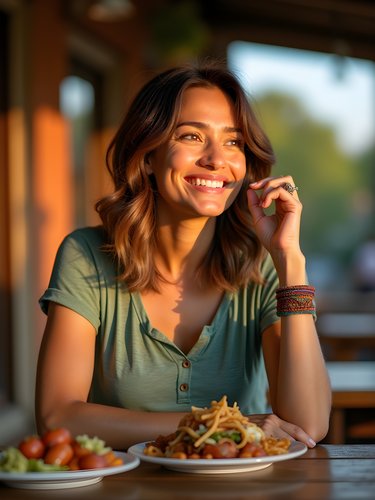
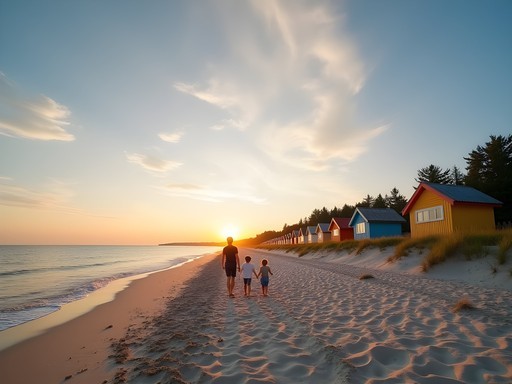
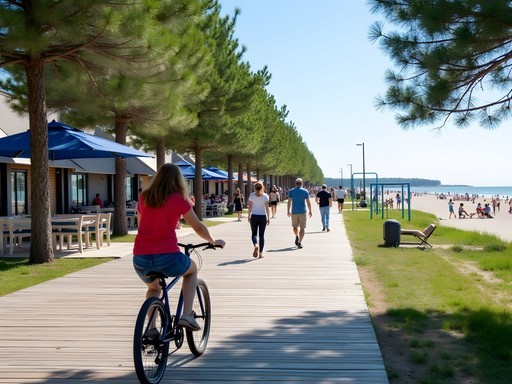
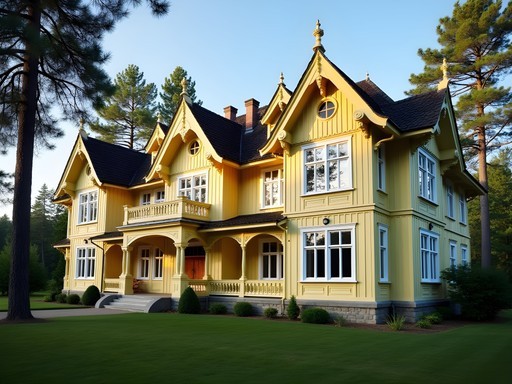
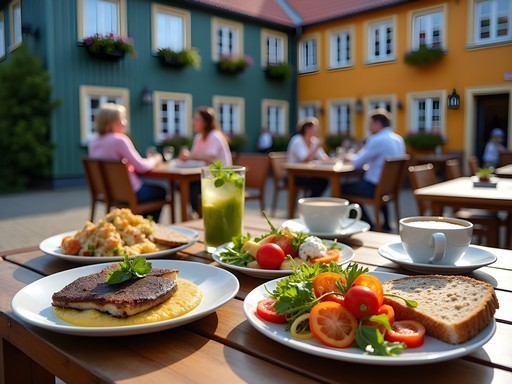

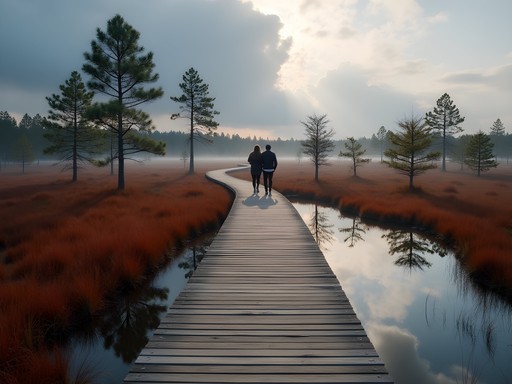


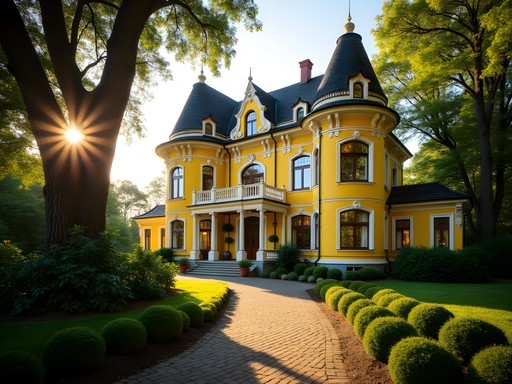
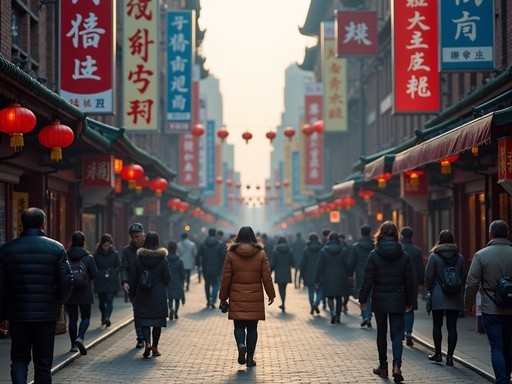
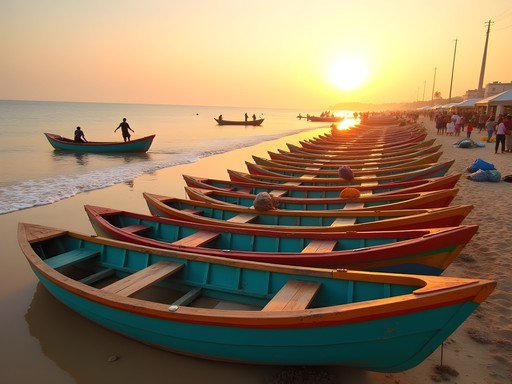





Comments
springlover
Just got back from Pärnu and wanted to add that the local food scene is amazing! Cafe Supelsaksad had the best cakes I've ever tried, and Steffani Pizzeria was surprisingly authentic. The local berry wines at Pärnu Veiniklubi are worth trying too! We rented bikes and it was the perfect way to explore the coastline.
luckytime
Thanks for the food tips! Did you try any Estonian dishes?
springlover
Yes! Definitely try kama (a traditional grain mixture often served with yogurt) for breakfast and the smoked fish is amazing. Oh, and black bread with everything!
coffeechamp
Those wooden villas look incredible! Great photos!
Hunter Thompson
Mate, I backpacked through the Baltics last summer and Pärnu was an absolute gem! Stayed at a hostel near the beach for just €15/night and met loads of cool people. The mud spa treatments are INSANE value compared to Western Europe - got a full mud wrap for under €30! For budget travelers, hit up the local markets for cheap eats and definitely try the smoked fish from the vendors near the harbor. Also, the nightlife surprised me - Beach Club had some proper bangers going! If you're there on Wednesday, check out the free walking tour that starts at the tourist office. I used my travel towel constantly as it was perfect for both beach days and hostel showers.
luckyzone
Great post! Is it worth visiting in September or is it too cold by then?
Olivia Sanchez
September can actually be lovely in Pärnu! The water might be a bit chilly for swimming, but you'll have the beach almost to yourself, and the fall colors in the parks are stunning. Plus, accommodation prices drop significantly after August.
Brian Torres
We took our kids to Pärnu last summer and it was such a refreshing change from overcrowded Mediterranean beaches! The shallow, calm water was perfect for our little ones, and the playgrounds along the promenade kept them entertained for hours. Don't miss the mini-golf course near the beach - our 7-year-old still talks about it! Also, the wooden villa district is stunning for a family walk, especially in the golden hour light. The local ice cream shops were a big hit too!
springlover
Did you find it easy to get around with kids? We're thinking of visiting but worried about transportation.
Brian Torres
Super easy! The town is very walkable, and we rented bikes with child seats for longer trips. Taxis were affordable too when the kids got tired.
luckytime
Wow, never thought of Estonia as a beach destination! Adding this to my list!
journeyguy77
Just booked my tickets after reading this! Can't wait to check out those wooden villas Olivia mentioned!
Savannah Torres
This article brings back so many memories! We took our family to Pärnu last summer as part of our month-long Baltic adventure, and it ended up being everyone's favorite stop. My kids (7 and 9) still talk about the shallow, warm water and how they could walk out forever. The playground right on the beach was a lifesaver for afternoon breaks from the sun. What Olivia didn't mention is the amazing ice cream shop called Reval Café near the beach promenade - my kids rated it the "best in Europe" (and we tried A LOT of ice cream). The locals were incredibly friendly to us despite our complete lack of Estonian language skills. We ended up extending our stay from 3 to 7 days because no one wanted to leave! One tip: if you're visiting in July, book accommodations WAY in advance. We almost couldn't find a place because of a music festival happening that weekend.
journeyx99
Any recommendations for family-friendly accommodations? Traveling with two kids (8 and 10) this summer and would love something close to the beach but not super expensive.
Savannah Torres
We stayed at Villa Ammende with our kids last year and they loved the garden area! It's a bit of a splurge though. For more budget-friendly, try Frost Boutique Hotel - still walkable to the beach and they have family rooms. The staff was super helpful with kid-friendly recommendations!
journeyx99
Thanks so much! Will check out Frost Boutique Hotel. Did your kids enjoy any specific activities there?
Nicole Russell
I visited Pärnu last August and was BLOWN AWAY! The beach is so clean and the water is surprisingly warm for the Baltic. My favorite discovery was renting a bike and exploring the coastal trail that goes through the nature reserve. The sunsets there are UNREAL - I got some of my best Instagram shots ever. Pro tip: if you're into photography, bring a wide angle lens for those epic beach sunset shots. The light there has this magical quality I haven't seen elsewhere in the Baltics!
Venture X
Premium card with 2X miles, $300 travel credit, Priority Pass